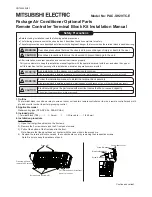
Commissioning
EL3182
108
Version: 1.2
• 125 µs (EL31x2 in 2 channel mode)
• 150 µs (EL31x4)
• 250 µs (EL3174)
• 200 µs (EL3174-0002, EL3174-0032)
• 500 µs (EL3174-0090)
for standard IPCs.
In input-based mode the sync interrupt is shifted automatically, so that the process data are ready just before
the current process data cycle.
If the frame jitter is too large, there is still the possibility that duplicate data will be retrieved or that the
transmission will be interrupted. Then the jitter must be reduced or a slower cycle time selected by TwinCAT
system corrective measures.
5.4.5.5
Filter operation (FIR and IIR), index 0x80n0:06, 0x80n0:15
The EL 31xx terminals incorporate a digital filter which, depending on its settings, can adopt the
characteristics of a
F
inite
I
mpulse
R
esponse filter (an
FIR filter
), or an
I
nfinite
I
mpulse
R
esponse filter (an
IIR
filter
). The filter is deactivated by default. Please observe the following note regarding activation with index
.
Activation of the filter with index
and setting of the filter character-
The filter frequencies are set for all channels of the EL3xxx terminals centrally via index
(channel 1). The corresponding indices 0x80n0:15 of the other channels have no parameteri-
zation function.
FIR filter
.
The filter performs a notch filter function and determines the conversion time of the terminal. The higher the
filter frequency, the faster the conversion time. A 50 Hz and a 60 Hz filter are available.
Notch filter means that the filter has zeros (notches) in the frequency response at the filter frequency and
multiples thereof, i.e. it attenuates the amplitude at these frequencies.
The FIR filter operates as a non-recursive filter.
















































